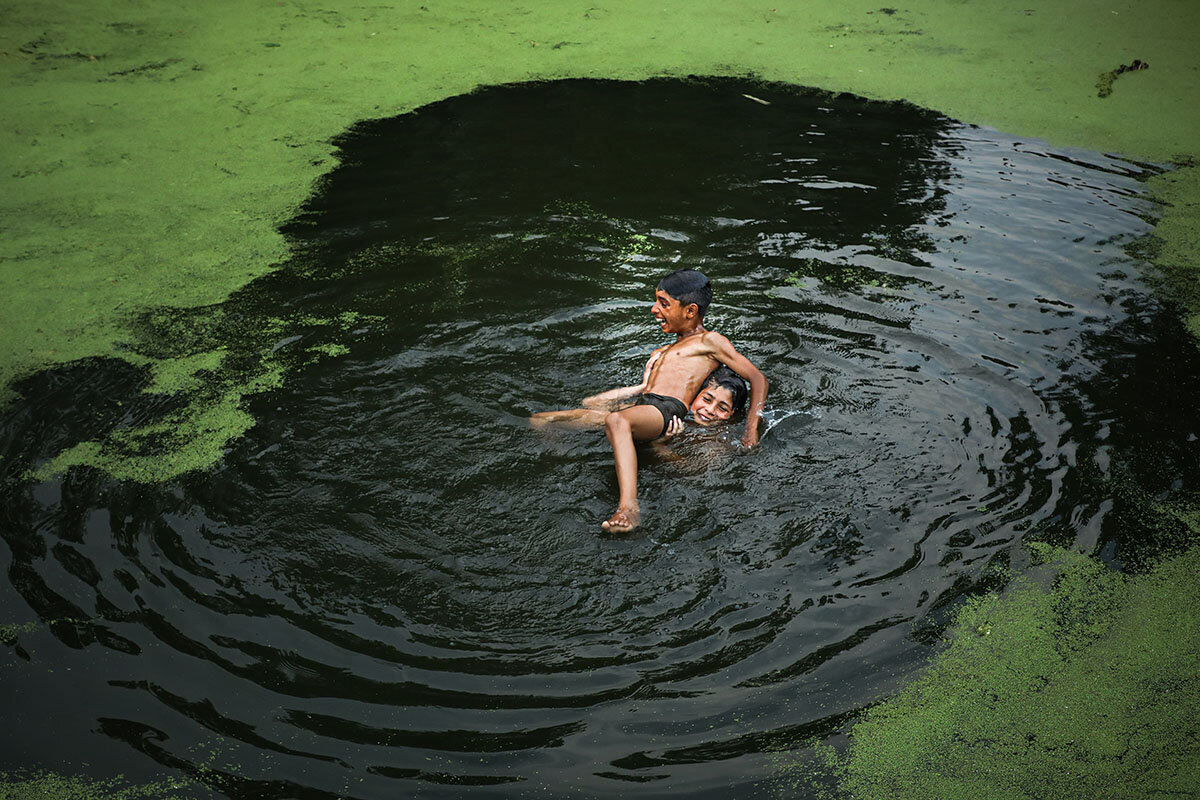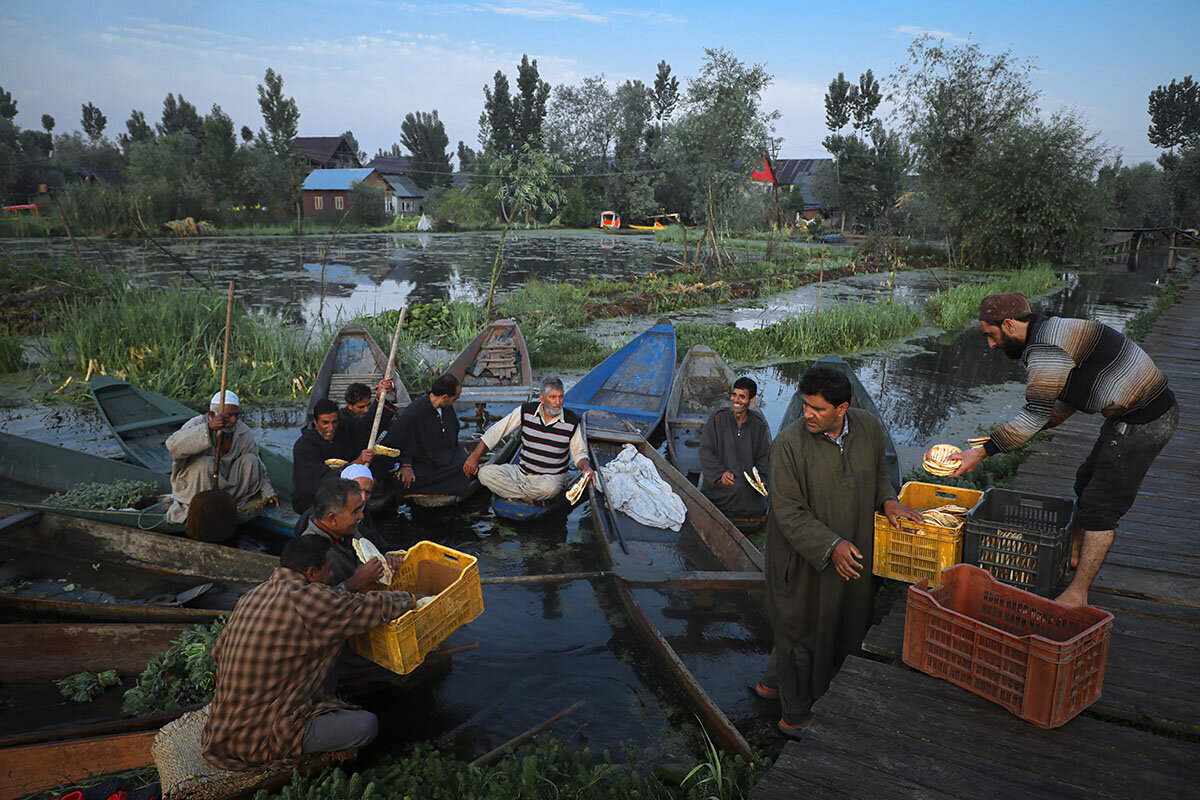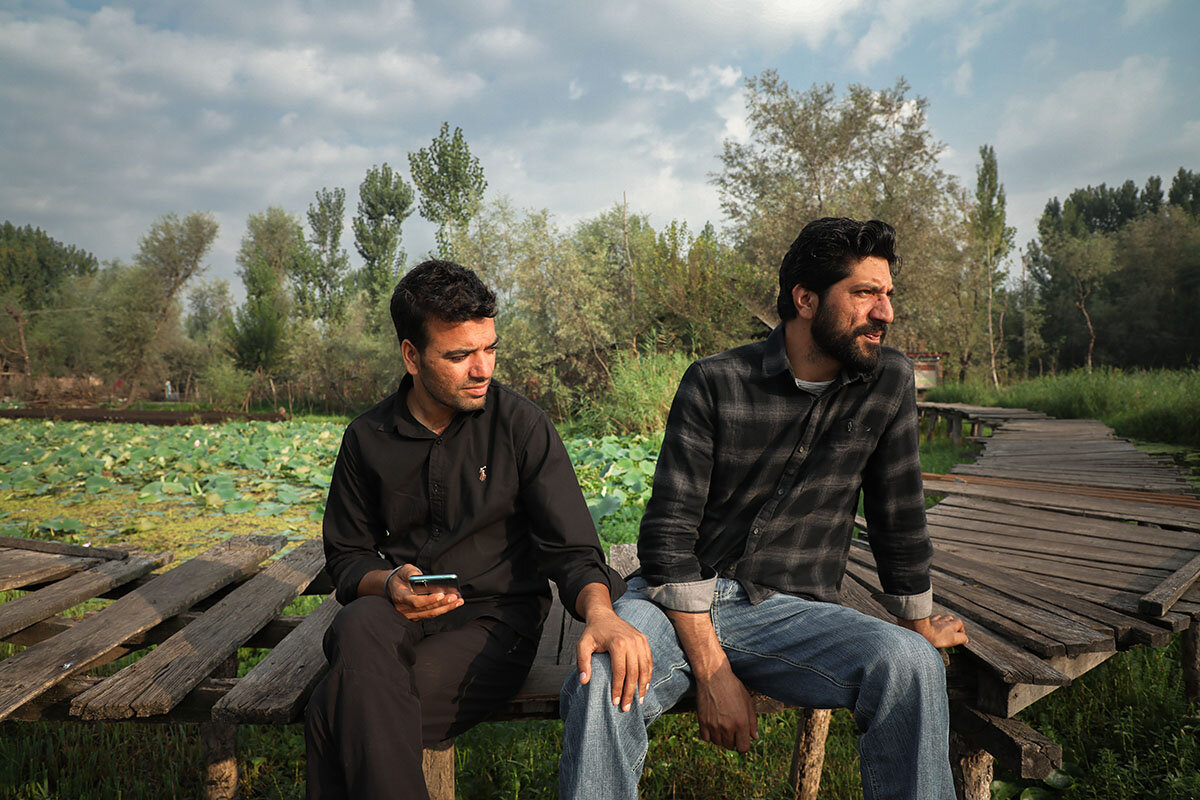In Pictures: India’s timeless floating market lives on
Loading...
| Srinagar, India
The famed floating market of Dal Lake has been a hub for farmers and vendors for generations. Since the 1960s, the market has attracted tourists seeking a unique glimpse of life in the Kashmir Valley.
Dal Lake spreads over an area of 7 to 8 1/2 square miles, a sheet of water reflecting the carved wooden balconies of houseboats and the misty peaks of the Pir Panjal Range. The lake supports a small city, with floating houses, schools, and markets. There’s even a post office.
At the sabji bazaar (vegetable market), vendors gather on the lake’s tributaries at daybreak and wrap up just as sunlight touches the water.
The floating gardens are created by weaving roots and branches into mats and filling them with silt and algae. Farmers produce a variety of vegetables, such as tomatoes; cucumbers; and nadru, or lotus stems, a delicacy in Kashmiri cuisine.
People from all walks of life come together in this vibrant market, creating a sense of unity and opportunity. Amid unrest and political instability in the region, the floating market is a lifeline. It provides a livelihood for thousands of people, from flower sellers to vegetable growers.
To protect the fragile habitat, visitors are encouraged to take shikaras, traditional boats propelled by a rower, instead of motorized vessels. A boat trip is a fitting way to experience the vibrancy of Dal Lake.











